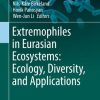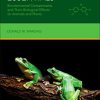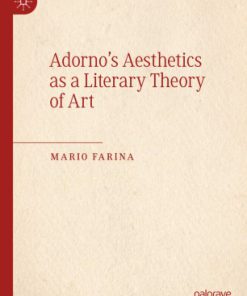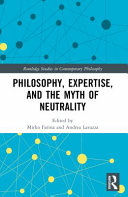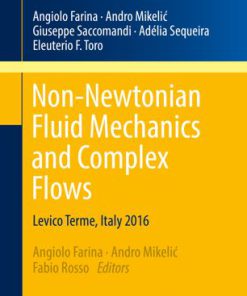Ecoacoustics 1st edition by Almo Farina, Stuart Gage 1119230717 9781119230717
$50.00 Original price was: $50.00.$25.00Current price is: $25.00.
Ecoacoustics 1st edition by Almo Farina, Stuart H. Gage – Ebook PDF Instant Download/DeliveryISBN: 1119230717, 9781119230717
Full download Ecoacoustics 1st edition after payment.
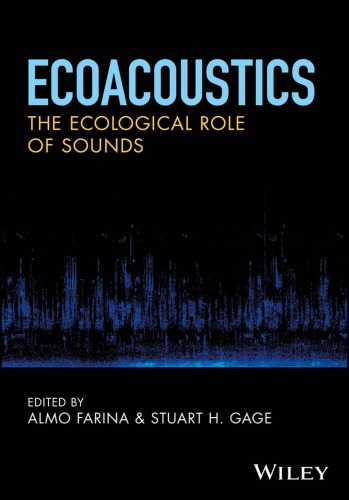
Product details:
ISBN-10 : 1119230717
ISBN-13 : 9781119230717
Author: Almo Farina, Stuart H. Gage
The sounds produced by geophonic, biophonic and technophonic sources are relevant to the function of natural and human modified ecosystems. Passive recording is one of the most non-invasive technologies as its use avoids human intrusion during acoustic surveys and facilitates the accumulation of huge amounts of acoustical data. For the first time, this book collates and reviews the science behind ecoaucostics; illustrating the principles, methods and applications of this exciting new field. Topics covered in this comprehensive volume include; the assessment of biodiversity based on sounds emanating from a variety of environments the best technologies and methods necessary to investigate environmental sounds implications for climate change and urban systems the relationship between landscape ecology and ecoacoustics the conservation of soundscapes and the social value of ecoacoustics areas of potential future research. An invaluable resource for scholars, researchers and students, Ecoacoustics: The Ecological Role of Sounds provides an unrivalled set of ideas, tools and references based on the current state of the field.
Ecoacoustics 1st Table of contents:
Chapter 1: Ecoacoustics: A New Science
1.1 Ecoacoustics as a New Science
1.2 Characteristics of a Sound
1.3 Sound and its Importance
1.4 Ecoacoustics and Digital Sensors
1.5 Ecoacoustics Attributes
1.6 Ecoacoustics and Ecosystem Management
1.7 Quantification of a Sound
1.8 Archiving Ecoacoustics Recordings
1.9 Ecological Forecasting
References
Chapter 2: The Duality of Sounds: Ambient and Communication
2.1 Introduction
2.2 Vegetation and Ecoacoustics
2.3 Acoustic Resources, Umwelten, and Eco-fields
2.4 Sounds as Biological Codes
2.5 Sound as a Compass for Navigation
2.6 Geophonies from Sacred Sites – How to Incorporate Archeoacoustics into Ecoacoustics
References
Chapter 3: The Role of Sound in Terrestrial Ecosystems: Three Case Examples from Michigan, USA
3.1 Introduction
3.2 C1 Visualization of the Soundscape at Ted Black Woods, Okemos, Michigan during May 2016
3.4 C3 Disturbance in Terrestrial Systems: Tree Harvest Impacts on the Soundscape
References
Chapter 4: The Role of Sound in the Aquatic Environment
4.1 Overview on Underwater Sound Propagation
4.2 Sound Emissions and their Ecological Role in Marine Vertebrates and Invertebrates
4.3 Impacts of Anthropogenic Noise in Aquatic Environments
References
Chapter 5: The Acoustic Chorus and its Ecological Significance
5.1 Introduction
5.2 Time of Chorus
5.3 The Chorus Hypothesis
5.4 Choruses in Birds
5.5 Choruses in Amphibians
5.6 Choruses in the Marine Environment
5.7 Conclusions and Discussion
References
Chapter 6: The Ecological Effects of Noise on Species and Communities
6.1 Introduction
6.2 The Nature of Noise
6.3 Natural Sources of Noise
6.4 Anthropogenic Sources of Noise
6.5 Effects of Noise on the Animal World
6.6 How Animals Neutralize the Effect of Noise
6.7 Noise in Marine and Freshwater Systems
6.8 Conclusions
References
Chapter 7: Biodiversity Assessment in Temperate Biomes using Ecoacoustics
7.1 Introduction
7.2 Sound as Proxy for Biodiversity
7.3 Methods and Application of Ecoacoustics
7.4 Acoustic Communities as a Proxy for Biodiversity
7.5 Problems and Open Questions
7.6 Ecoacoustic Events: Concepts and Procedures
7.7 Conclusion
References
Chapter 8: Biodiversity Assessment in Tropical Biomes using Ecoacoustics: Linking Soundscape to Forest Structure in a Human-dominated Tropical Dry Forest in Southern Madagascar
8.1 Introduction
8.2 Methods
8.3 Results
8.4 Discussion
References
Chapter 9: Biodiversity Assessment and Environmental Monitoring in Freshwater and Marine Biomes using Ecoacoustics
9.1 Introduction
9.2 Freshwater Habitats
9.3 Marine Neritic Habitats
9.4 Marine Oceanic Habitats
9.5 Summary and Future Directions
References
Chapter 10: Integrating Biophony into Biodiversity Measurement and Assessment
10.1 Introduction
10.2 Biological Information in the Soundscape
10.3 Ecoacoustics in Biodiversity Assessment
10.4 Conclusion
References
Chapter 11: Landscape Patterns and Soundscape Processes
11.1 An Introduction to Landscape Ecology (Theories and Applications)
11.2 Relationship Between Landscape Ecology and Soundscape Ecology: A Semantic Approach
11.3 Acoustic Community and Landscape Mosaics
11.4 Ecoacoustics in a Changing Landscape
11.5 Conclusion
References
Chapter 12: Connecting Soundscapes to Landscapes: Modeling the Spatial Distribution of Sound
12.1 Introduction
12.2 Conceptualizing Soundscapes in Space and Time
12.3 Capturing Soundscapes in Space and Time
12.4 Sound Metrics and Interpreting Nature
12.5 A Soundscape Metric for Modeling
12.6 Discriminating the Components of a Soundscape
12.7 Generating a Predictive Soundscape Model
12.8 Conclusion
References
Chapter 13: Soil Acoustics
13.1 Introduction
13.2 Soil Insect Acoustics
13.3 Compost Activating Agent Acoustics
13.4 Soil Aggregate Slaking Acoustics
13.5 Conclusion
References
Chapter 14: Fundamentals of Soundscape Conservation
14.1 Introduction
14.2 Nature Sounds in Science and Education
14.3 The Role of Sound Libraries
14.4 Noise Pollution, the Acoustic Habitat, and the Biology of Disturbance
14.5 Soundscapes, Nature Conservation, and Public Awareness
14.6 Marine Soundscapes
14.7 Conclusion
References
Chapter 15: Urban Acoustics: Heartbeat of Lansing, Michigan, USA
15.1 Introduction
15.2 Objectives
15.3 Methods
15.4 Results
15.5 Discussion and conclusions
References
Chapter 16: Analytical Methods in Ecoacoustics
16.1 Introduction
16.2 Components of an Acoustic Recording
16.3 Visualization of an Acoustic Recording
16.4 Processing Multiple Recordings
16.5 Analyzing Acoustic Time Series
16.6 Time Series of Acoustic Indices
16.7 Searching and Symbolic Methods
16.8 Visualization and Navigation of Long-Duration Recordings
16.9 Spectrogram Pyramids
16.10 New Approaches to Analysis
16.11 Web Platforms for the Visualization of Environmental Audio
References
Chapter 17: Ecoacoustics and its Expression through the Voice of the Arts: An Essay
17.1 Introduction
17.2 Immersive Art as a Science Dissemination Tool
17.3 Examples of Ecoacoustic Works by Bernie Krause
17.4 Examples of Ecoacoustics Works by David Monacchi
17.5 Conclusion
References
Chapter 18: Ecoacoustics Challenges
18.1 Introduction
18.2 Philosophical Issues
18.3 Ecological Issues
18.4 Sensor Technology
18.5 Acoustic Computations and Modeling
18.6 Public Information
18.7 Monetary Issues
People also search for Ecoacoustics 1st:
open ecoacoustics
journal of ecoacoustics
world ecoacoustics congress
qut ecoacoustics
international society of ecoacoustics
Tags: Ecoacoustics, Almo Farina, Stuart Gage, geophonic, biophonic
You may also like…
Politics & Philosophy
Adorno’s Aesthetics as a Literary Theory of Art Mario Farina
Politics & Philosophy - Major Branches of Philosophical Study
Biology and other natural sciences - Ecology
Science (General)
Computers - Programming


